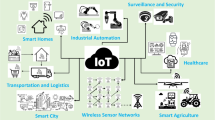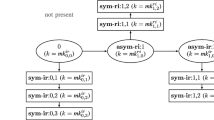Abstract
Preserving user privacy and authenticity are essential requirements for location based services in order to protect user’s confidential information from public exposure and provide secure access to various services. Recently, numerous approaches towards these challenges have been proposed. Many of these are based on dynamic update of fixed parameters (such as pseudonym, transaction sequence number, shared key, counter, etc.) along with symmetric/asymmetric key cryptography, and seems promising in dealing with various security related issues such as unlinkability, forward/backward secrecy, replay attack and stolen verifier attack. However, the concept of dynamic update may affect the system performance in case of desynchronization attack as it requires to perform additional computations or user reregistration in order to resynchronize the peers. In this article, we address the problem of desynchronization attack and propose a privacy preserving user authentication protocol for location based services. The proposed protocol is based on elliptic curve cryptography and introduces dynamic randomized counters in order to synchronize the peers. Also, there is no need to resynchronize the peers in case of desynchronization attack. Additionally, there is no timestamp used in construction of the protocol to avoid clock synchronization problem. The security properties of the protocol are validated both formally and informally. Moreover, the safety of the protocol is assured using AVISPA tool based automated simulation. Finally, a performance comparison has been made against some recently proposed approaches to ensure the effectiveness of our protocol in real life implementations.





Similar content being viewed by others
References
Rahman MG, Imai H (2002) Security in wireless communication. Wirel Person Commun 22 (2):213–228
Song T, Li R, Mei B, Yu J, Xing X, Cheng X (2017) A privacy preserving communication protocol for iot applications in smart homes. IEEE Internet Things J 4(6):1844–1852
Steinfield C (2004) The development of location based services in mobile commerce. In: E-life after the dot com bust, pp 177–197
Boyd C, Mathuria A, Stebila D (2003) Protocols for authentication and key establishment, vol 1
Dolev D, Yao A (1983) On the security of public key protocols. IEEE Trans Inf Theory 29 (2):198–208
Shouqi C, Wanrong L, Liling C, Qing S, Xin H (2019) An improved anonymous authentication protocol for location-based service. IEEE Access 7:114203–114212
Reddy AG, Das AK, Yoon EJ, Yoo KY (2016) A secure anonymous authentication protocol for mobile services on elliptic curve cryptography. IEEE Access 4:4394–4407
Odelu V, Banerjee S, Das AK, Chattopadhyay S, Kumari S, Li X, Goswami A (2017) A secure anonymity preserving authentication scheme for roaming service in global mobility networks. Wirel Pers Commun 96(2):2351–2387
Lee B, Kim K (2002) Receipt-free electronic voting scheme with a tamper-resistant randomizer. In: International conference on information security and cryptology, pp 389–406
Kocher P, Jaffe J, Jun B (1999) Differential power analysis. In: Annual international cryptology conference, pp 388–397
Messerges TS, Dabbish EA, Sloan RH (2002) Examining smart-card security under the threat of power analysis attacks. IEEE Trans Comput 51(5):541–552
Raymond DR, Midkiff SF (2008) Denial-of-service in wireless sensor networks: Attacks and defenses. IEEE Pervasive Comput 7(1):74–81
Wood AD, Stankovic JA (2002) Denial of service in sensor networks, vol 35
Zhu J, Ma J (2004) A new authentication scheme with anonymity for wireless environments. IEEE Trans Consum Electron 50(1):231–235
Lu Y, Xu G, Li L, Yang Y (2019) Robust privacy-preserving mutual authenticated key agreement scheme in roaming service for global mobility networks. IEEE Syst J 13(2):1454– 1465
Gope P, Hwang T (2016) Lightweight and energy-efficient mutual authentication and key agreement scheme with user anonymity for secure communication in global mobility networks. IEEE Syst J 10(4):1370–1379
Xu G, Liu J, Lu Y, Zeng X, Zhang Y, Li X (2018) A novel efficient maka protocol with desynchronization for anonymous roaming service in global mobility networks. J Netw Comput Appl 107:83–92
Menezes AJ, Van Oorschot PC, Vanstone SA (2018) Handbook of applied cryptography. CRC press
Shashidhara R, Bojjagani S, Maurya AK, Kumari S, Xiong H (2020) A robust user authentication protocol with privacy-preserving for roaming service in mobility environments. Peer-to-Peer Netw Appl 13(6):1943–1966
Memon I, Hussain I, Akhtar R, Chen G (2015) Enhanced privacy and authentication: an efficient and secure anonymous communication for location based service using asymmetric cryptography scheme. Wirel Pers Commun 84(2):1487–1508
Abdalla M, Fouque PA, Pointcheval D (2005) Password-based authenticated key exchange in the three-party setting. In: International workshop on public key cryptography, pp 65–84
Lee CC, Hwang MS, Liao IE (2006) Security enhancement on a new authentication scheme with anonymity for wireless environments. IEEE Trans Ind Electron 53(5):1683–1687
Wu CC, Lee WB, Tsaur WJ (2008) A secure authentication scheme with anonymity for wireless communications. IEEE Commun Lett 12(10):722–723
Baza MI, Fouda MM, Eldien AST, Mansour HA (2015) An efficient distributed approach for key management in microgrids. In: 2015 11Th international computer engineering conference (ICENCO). IEEE, pp 19–24
Zhou S, Zhang Z, Luo Z, Wong EC (2010) A lightweight anti-desynchronization RFID authentication protocol. Inf Syst Front 12(5):521–528
Wen F, Susilo W, Yang G (2013) A secure and effective anonymous user authentication scheme for roaming service in global mobility networks. Wirel Person Commun 73(3):993–1004
Gope P, Hwang T (2015) Enhanced secure mutual authentication and key agreement scheme preserving user anonymity in global mobile networks. Wirel Pers Commun 82(4):2231–2245
Zhang G, Fan D, Zhang Y, Li X, Liu X (2015) A privacy preserving authentication scheme for roaming services in global mobility networks. Secur Commun Netw 8(16):2850–2859
Wu F, Xu L, Kumari S, Li X, Khan MK, Das AK (2016) An enhanced mutual authentication and key agreement scheme for mobile user roaming service in global mobility networks. Ann Telecommun 72(3-4):131–144
Abbasinezhad-Mood D, Nikooghadam M (2018) Efficient anonymous passwordauthenticated key exchange protocol to read isolated smart meters by utilization of extended chebyshev chaotic maps. IEEE Trans Ind Inf 14(11):4815–4828
Rogaway P, Shrimpton T (2004) Cryptographic hash-function basics: definitions, implications, and separations for preimage resistance, second-preimage resistance, and collision resistance. In: International workshop on fast software encryption, pp 371–388
Koblitz N (1987) Elliptic curve cryptosystems. Math Comput 48(177):203–209
Armando A, Basin D, Boichut Y, Chevalier Y, Compagna L, Cuellar J, Drielsma PH, Heam PC, Kouchnarenko O, Mantovani J et al (2005) The AVISPA tool for the automated validation of internet security protocols and applications. In: International conference on computer aided verification, pp 281–285
Team T et al (2006) Avispa v1. 1 user manual. Information society technologies programme, http://avispa-project.org
Von Oheimb D (2005) The high-level protocol specification language HLPSL developed in the EU project avispa. In: Proceedings of APPSEM 2005 workshop, pp 1–17
Basin D, Modersheim S, Vigano L (2005) Ofmc: a symbolic model checker for security protocols. Int J Inf Secur 4(3):181–208
Turuani M (2006) The cl-atse protocol analyser. In: International conference on rewriting techniques and applications, pp 277–286
Kilinc HH, Yanik T (2013) A survey of sip authentication and key agreement schemes. IEEE Commun Surv Tutorials 16(2):1005–1023
Ying B, Nayak A (2017) Anonymous and lightweight authentication for secure vehicular networks. IEEE Trans Veh Technol 66(12):10626–10636
Author information
Authors and Affiliations
Corresponding author
Additional information
Publisher’s note
Springer Nature remains neutral with regard to jurisdictional claims in published maps and institutional affiliations.
Rights and permissions
About this article
Cite this article
Roy, P.K., Bhattacharya, A. Desynchronization resistant privacy preserving user authentication protocol for location based services. Peer-to-Peer Netw. Appl. 14, 3619–3633 (2021). https://doi.org/10.1007/s12083-021-01194-3
Received:
Accepted:
Published:
Issue Date:
DOI: https://doi.org/10.1007/s12083-021-01194-3




